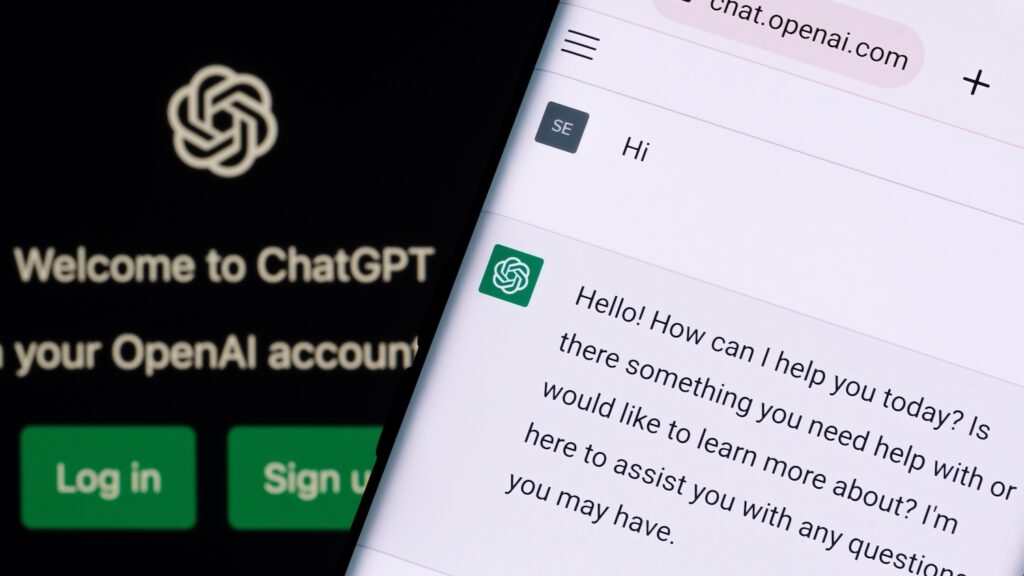Introduction
Have you ever wondered how a machine can answer your questions, write essays, or even hold a full conversation? That’s where ChatGPT comes into the picture. ChatGPT is one of the most advanced AI tools available today, designed to understand and generate human-like responses. But how many versions of it exist? What does the future hold for AI like this, and are there any downsides we should be aware of? This article will explore all these questions in simple, easy-to-understand language.
What is ChatGPT?
ChatGPT is an Artificial Intelligence (AI) language model developed by OpenAI. Think of it as a super-smart chatbot capable of understanding what you type and generating thoughtful, human-like responses. It uses advanced machine learning to predict and produce the text that comes after your input. Whether you want help with homework, content creation, or casual conversation, ChatGPT is your AI-powered assistant.
How Does ChatGPT Work?
At its core, ChatGPT uses something called a Large Language Model (LLM). This means it has been trained on a massive amount of text data from books, articles, and the internet. The more data it processes, the better it gets at understanding and predicting language. Imagine teaching a robot every word and sentence you’ve ever read—eventually, it becomes good at talking just like you.
The Different Versions of ChatGPT
ChatGPT has evolved over time, and OpenAI has released several versions of this model. Each version represents an improvement in terms of understanding, generating content, and overall performance.
- GPT-1: The very first version that laid the foundation for ChatGPT.
- GPT-2: A stronger, more capable model that could generate coherent paragraphs of text.
- GPT-3: A massive leap in AI capabilities with 175 billion parameters.
- GPT-3.5: An improved version of GPT-3, offering better accuracy and speed.
- GPT-4: The latest and most advanced version yet, with enhanced reasoning, creativity, and understanding.
Key Features of Each Version
- GPT-1: Limited capabilities, designed for research purposes.
- GPT-2: Able to write short stories and essays but prone to errors.
- GPT-3: Highly accurate responses and content creation abilities.
- GPT-3.5: Faster responses with fewer mistakes.
- GPT-4: Supports more complex tasks like problem-solving, creative writing, and professional-level conversations.
Practical Applications of ChatGPT
ChatGPT isn’t just for tech enthusiasts. It has numerous practical uses, such as:
- Content Creation: Writing articles, blogs, and emails.
- Education: Helping students with explanations and tutoring.
- Customer Support: Automating chat-based responses for businesses.
- Programming: Assisting developers by debugging and generating code.
- Personal Assistance: Planning schedules, answering questions, or even writing a bedtime story.

How Will ChatGPT Be Used in the Future?
The future looks bright for ChatGPT. Here are some exciting possibilities:
- Enhanced Education: AI tutors offering personalized learning for every student.
- Healthcare: Assisting doctors with diagnostics and patient interactions.
- Creative Industries: Helping artists, writers, and filmmakers develop ideas faster.
- Virtual Assistants: Offering seamless and natural communication to manage your daily tasks.
- Robotics: Powering robots to interact with humans in a natural, conversational manner.
The Role of ChatGPT in Daily Life
In the future, ChatGPT could become part of your everyday life. From helping you draft a professional email to answering your child’s homework questions, it’s like having an assistant who’s always ready and never gets tired.
The Benefits of ChatGPT
- Saves Time: Automates repetitive tasks like writing and answering queries.
- Accessible: Offers knowledge and assistance to anyone with an internet connection.
- Improves Productivity: Assists in research, programming, and creative processes.
- Cost-effective: Reduces the need for hiring extra staff for basic tasks.
The Risks and Dark Side of AI
While AI like ChatGPT has many benefits, it also comes with risks:
- Job Loss: Automation can replace human roles, leading to unemployment.
- Misinformation: AI can sometimes generate false or misleading content.
- Bias: AI can inherit biases from the data it was trained on.
- Over-dependence: Relying too much on AI might impact critical thinking skills.
Ethical Concerns About AI
Ethics play a big role when discussing AI. Questions arise such as:
- Should AI be allowed to replace human creativity?
- How do we ensure AI systems are fair and unbiased?
- Who is responsible if AI causes harm?
Can AI Replace Humans?
AI is powerful, but it can never fully replace humans. It lacks emotions, creativity at a deep level, and moral judgment. Instead, AI should be seen as a tool to enhance human capabilities, not replace them.

AI in Different Industries
From healthcare and education to manufacturing and finance, AI is making waves everywhere. For instance, in healthcare, AI helps analyze medical reports quickly. In finance, it predicts stock trends.
The Future of Artificial Intelligence
The future of AI is promising yet uncertain. Innovations will keep improving, but ethical concerns and risks will need to be managed carefully to ensure AI benefits everyone.
Balancing AI Benefits and Risks
It’s important to strike a balance. While AI can make life easier, it’s up to us to use it responsibly. By creating regulations and prioritizing ethical use, we can harness AI’s potential while minimizing risks.
Conclusion
ChatGPT and AI have brought significant advancements to our world, making tasks easier and more efficient. However, like any tool, AI comes with both benefits and drawbacks. The future of ChatGPT is full of possibilities, but we must remain cautious and ensure ethical use. If used responsibly, AI can become an incredible partner in human progress.


[…] use ChatGPT on WhatsApp, you can integrate it via third-party services or API tools. Here’s a step-by-step […]